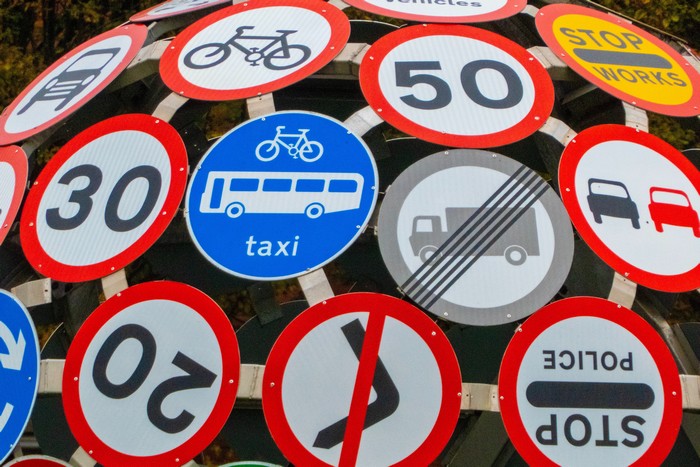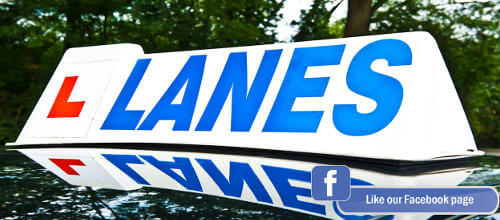
When driving, you’ll begin to find quite quickly that not every road displays a speed limit sign – at least not in the moment that you’re specifically looking for one! It is important to be aware of the possible speed limits for each different road type to avoid facing a fine, gaining points on your licence or causing harm to yourself or other road users and pedestrians. So, what are the limits?
Built up areas
In built up areas, often signified by roadside parking or regular lampposts, the speed limit for all vehicles is 30mph, unless a local speed limit specifies otherwise.
Single carriageways
For cars, motorcycles and motorhomes (under 3.05 tonnes), the speed limit is 60mph. If these vehicles are towing a trailer, the limit reduces to 50mph.
For motorhomes (over 3.05 tonnes), busses, coaches, minibuses and goods vehicles (under 7.5 tonnes), the limit is 50mph.
For goods vehicles (over 7.5 tonnes), the speed limit is 40mph.
Dual carriageways
For cars, motorcycles and motorhomes (under 3.05 tonnes), the speed limit is 70mph. If these vehicles are towing a trailer, this reduces to 60mph.
For motorhomes (over 3.05 tonnes), busses, coaches, minibuses and goods vehicles (under 7.5 tonnes), the limit is 60mph
For goods vehicles (over 7.5 tonnes), the speed limit is 50mph.
Motorways
For cars, motorcycles and motorhomes (under 3.05 tonnes), the speed limit is 70mph. If these vehicles are towing a trailer, this reduces to 60mph.
For motorhomes (over 3.05 tonnes), busses, coaches, minibuses and goods vehicles (under 7.5 tonnes), the limit is also 70mph.
For goods vehicles (over 7.5 tonnes), the speed limit is 60mph.
Local speed limits
Local speed limits are often enforced by councils in areas of heavy build up or regular pedestrian flow, such as outside schools and colleges or along a high street. These signs are rectangular and will feature a speed limit displayed in a red circle above the word ‘zone’. The end of the speed limit zone will be specified by a ‘zone ends’ sign, specifying the new limit, whether that is a displayed speed, or the national speed symbol.
National speed limits
The national limit, as specified above for all vehicle types, will be indicated by a white circular sign with a black diagonal line through. They will often be followed by a fixed speed camera or temporary traffic van positioned with a speed radar gun, filtering out those who are travelling dangerously and issuing them with a penalty.
Variable speed limits
Variable speed limits will be seen on smart motorways, where the cameras are able to monitor traffic and alter the speed limits to reduce congestion or slow traffic down. These variable limits will be displayed clearly on the framework above the road. In some instances, the speed limit may stay the same as expected, but the hard-shoulder may be opened to create another lane and reduce build-up. These speed limits are legal instructions and should be followed.
Minimum speed limits
Although they are rare, minimum speed limits can be found throughout the UK. They will be displayed within a blue, circular sign and it is then compulsory – if safe to do so – that you travel at this speed at a minimum. These signs can be found in areas where slow travelling or congestion could be a safety risk, such as tunnels.
It can also be classed as ‘unsafe’ to drive at a slow speed on a motorway and, although this is unlikely to not be defined by a minimum speed limit sign, you may attract the attention of police and risk being pulled over for dangerous driving.
Remember: There will be a penalty for driving at dangerous speeds or disregarding limits. From £100 fines to 3 points on your licence and a court hearing. Repeated penalties could also result in a permanent driving ban. Stay safe and smart on the road.
At Lanes School of Driving, our team of experienced driving instructors are available to guide drivers of all abilities and ages, from 17 to 70, to safe and knowledgeable driving. To find out more about how we could help you, give us a call on 020 8166 5678 or drop us an email at today.

